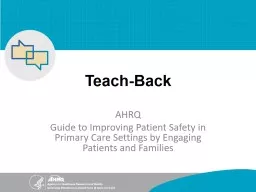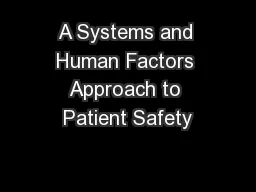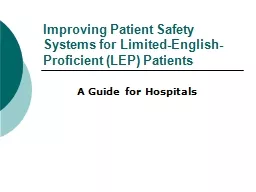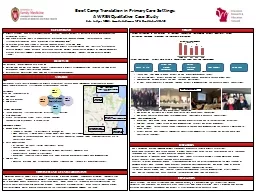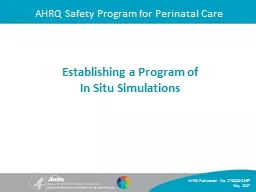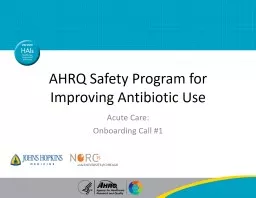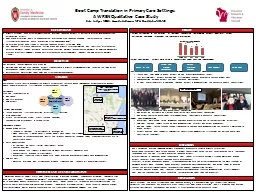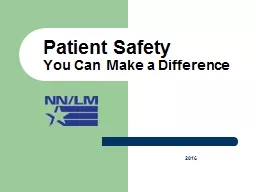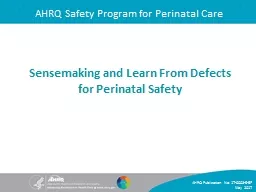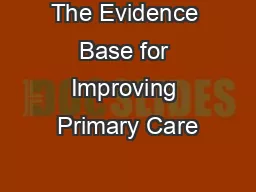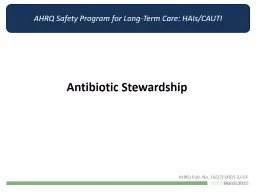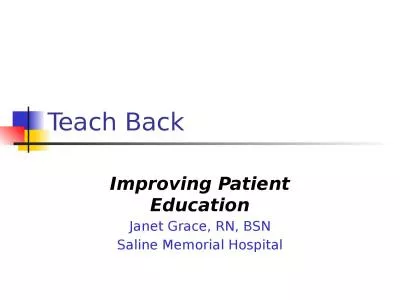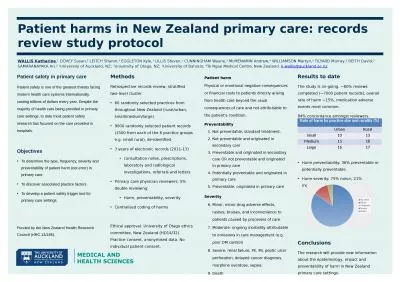PPT-Teach-Back AHRQ Guide to Improving Patient Safety in Primary Care Settings by Engaging
Author : botgreat | Published Date : 2020-06-17
What is TeachBack I want to make sure we are on the same page Can you tell me Can you show me how you would use your inhaler at home I want to make sure I explained
Presentation Embed Code
Download Presentation
Download Presentation The PPT/PDF document "Teach-Back AHRQ Guide to Improving Pati..." is the property of its rightful owner. Permission is granted to download and print the materials on this website for personal, non-commercial use only, and to display it on your personal computer provided you do not modify the materials and that you retain all copyright notices contained in the materials. By downloading content from our website, you accept the terms of this agreement.
Teach-Back AHRQ Guide to Improving Patient Safety in Primary Care Settings by Engaging: Transcript
Download Rules Of Document
"Teach-Back AHRQ Guide to Improving Patient Safety in Primary Care Settings by Engaging"The content belongs to its owner. You may download and print it for personal use, without modification, and keep all copyright notices. By downloading, you agree to these terms.
Related Documents

